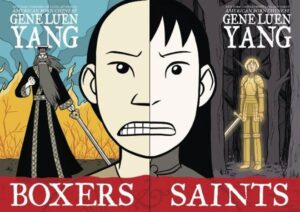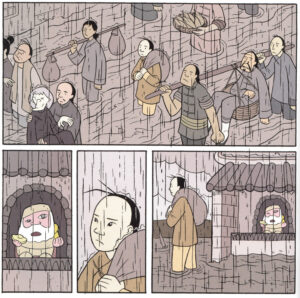
I have been reading Patricia Ebrey’s new book on the Song emperor Huizong. For those of you who don’t know him he known for being the most artistically accomplished of the Chinese emperors and for loosing his empire to the Jin. These things make him a good subject for a book, as a lot was written and preserved about him. The book itself is one of the most intimate portraits of a Chinese emperor in English, and there is a lot of good stuff in here on the Song government, Huizong’s actions and artistic production and other interesting topics. I am mostly going to talk about the fall of the Song and its aftermath. The defeat and exile sections are among the most detailed in the book, no doubt because the theme of an exiled emperor was attractive to later writers and compilers of sources
You can get some tips on how to conduct a siege. When the first Jurchen army approached Kaifeng they decided not to enter the city, but to demand ransom.
…the capital was thrown into an uproar trying to raise the truly huge sum of gold and silver, equal to 180 times the annual payments that Song had been paying to Liao. The government treasuries had large quantities of copper cash, bur the Jurchen wanted gold and silver, in much shorter supply. Everyone who had received gifts of gold or silver from the throne, including all the princes, Daoist officials, court musicians and artists, and so on, were to turn it over at the Yuanfeng Treasury. All palaces and imperially sponsored temples, as well as the Kaifeng prefectural offices were to turn over any gold and silver they had to the main treasury. Huge sums were confiscated from Wang Fu’s house- more than seven thousand bolts of cloth and ten million strings of cash- but a third of that was looted by people who forced their way in during the inventory. By 1126/1/20, the besieged Song court sent to the Jin camp more than three hundred thousand ounces of gold and twelve million ounces of silver. When that still was not enough, the government ordered any families owning gold or silver to turn it in to one of several collecting points. They would be compensated later at the rate of 20 strings of cash for each ounce of gold and 1.5 strings for each ounce of silver. Informing on those who concealed their gold or silver was rewarded at a rate of two-tenths of the concealed gold and one-tenth of the concealed silver. On 1/26, the court sent the equivalent of another five hundred ounces of gold and eight million ounces of silver, with much of it made up of jewelry and utensils collected from the populace. There was reason to rush; on 1/27 it was reported that the Jurchen were excavating the tombs of imperial consorts, princes, and princesses. (p.438)
I like the image of imperial largess flowing back to the palace, starting first with the elite and then spreading outward. You can see the beginnings of panic in the city as a third of the wealth from Wang Fu’s house is taken by the mob. Most interestingly, the Jurchen seem to have read their Foucault. Rather than entering the city and searching for movable wealth, why not have the court and the populace discipline themselves and root it out? They can even change the copper cash in the treasury for silver and gold! Although the Jurchen army left the first time the Song court was too riven by factionalism to either make peace or make war and by the end of the year another army was demanding even more gold and silver, far more than the court could come up with.
Jin officials entered Kaifeng and opened the Song government storehouses, which were found to have even more bolts of plain silk than demanded, but only a tiny fraction of the gold and silver. Song officials were assigned responsibilities for searching specific quadrants of the city and confiscating all gold and silver. Every few days, the Jurchens demanded something else for the Song government to deliver to them. For instance, on 12/5 Jin demanded ten thousand horses. Ranking officials were allowed to keep one horse, but all others were seized, over seven thousand all together The next day, 12/6, Jin demanded weapons, many of which people had taken after soldiers abandoned them. Qinzong issued an order that all weapons in Kaifeng, both government and private, be turned over to the Jin authorities. A few days later, on 12/10, all the money in the storehouses was distributed to the Jin soldiers as their rewards. On 12/13 a call was issued for twenty painters, fifty wine-makers, and three thousand bottles of wine. Ten days later Jin demanded a long list of books and documents by name, including Sima Guang’ s Comprehensive Mirror and calligraphy by Su Shi and Huang Tingjian. In some cases, the Kaifeng prefectual authorities had to buy the works from bookshops to fulfil the orders. A few days after that, the books from the Directorate of Education were taken (though as an insult, ones by Wang Anshi were discarded). As the scholars in Jin employ discovered that they were missing a title, they added it to their requisition lists. Just before the Lantern Festival, Jin demanded all the lanterns usually used not only by the palace, but also by temples and shops, then held their own ceremony outside the walls of the city. Not long afterward, they demanded the full set of procession paraphernalia, then took such objects as the Nine Cauldrons, the bells and other instruments used for the Music of Great Brilliance, consorts’ headgear, the blocks for printing books, including those for the Buddhist and Daoist canons, and maps, diagrams, and pictures of all sorts. From time to time, the Jurchen commander requisitioned specific craftsmen or specialists, such as physicians, musicians,astronomers, weapons makers, masons, gardeners, jade carvers, clerks, painters, storytellers, professors, Buddhist monks, and so on. Lists of objects taken from the palace are often staggering: 25,000 ancient bronze vessels, 1,000 ox carts, 1,000 parasols, 28,700 pills from the imperial pharmacy, 1,000,000 jin of silk thread, 1,800 bolts of a certain type of silk made in Hebei.
Here you can see the definition of movable wealth expanding (and common Jurchen soldiers getting something.) but even more, the Jurchen are starting to demand symbols of Imperial authority, most notably the Nine Cauldrons, but also all the other things (and people) you needed to be ruler and could carry away. They even demonstrated their taste by tossing out the books of Wang Anshi. I love the idea of professors as booty, along with gold, parasols, and bells.
As the situation slipped out of the control of the Song court things got worse and worse for the people of the city.
Although the city had fallen, the Jurchen forces kept the gates closed, enforcing, in a sense, a reverse siege to keep up the pressure on the city until all its demands were met. Food and firewood, therefore, were in very short supply. On 12/21 the court allowed government office buildings to be demolished for firewood; the next day, after a snow fall aggravated the situation, approval was given for people to enter Northeast Marchmount Park to chop down the rare trees planted there. A few days later, with another snowfall, people were also allowed to break up the hundred-odd buildings in the garden for fuel. So many rushed there that people were trampled to death.
There were lots of other bad things happening in the city, but it is not surprising that the sources would focus on the park. There is almost a checklist of things a bad last emperor is supposed to do, and waste money is one of them (frugality is always good, especially in emperors.) and one of the canonical ways to waste money is by building parks and palaces. The Northeast Marchmount Park was one of Huizong’s greatest achievements, a magnificent paradise that demonstrated his equivalence to the great rulers of antiquity. They too had built parks filled with animals and plants from all over their domain. Huizong was criticized for the expense of this park, and the costs it imposed on the people, and it is not surprising that cutting down its trees and burning its buildings would seem a fitting symbol of the end of his reign.
Huizong himself was a form of moveable wealth. The Jurchen eventually took him and his son and successor Qinzhong north, and both of them eventually ended up in Northern Manchuria. Huizong was of some use to the Jin, being required, for instance, to pay homage to the Jin ancestors, provide samples of his calligraphy and to convince Song holdouts in the north to surrender. They were pretty much the only male members of the family who were of much use, and many of others died on the march north.
The female members of his family and the various palace women were also a form of movable wealth, but all of them were of use. When the first large group of these women was brought to the Jurchen camp they were required to dress in entertainers clothes and serve the Jurchen generals at a banquet. Soon after it was announced that those women to be given to Jurchen soldiers were to start wearing their hair in the Jurchen fashion and let doctors abort their fetuses if they were pregnant. While most of the would eventually be distributed to Jurchen men or become palace slaves far in the north many died on the march due to harsh conditions, suicide, or died resisting rape. Other captives were traded off to the Tanguts, Mongols and Tartars at a ratio of 10 slaves to one horse.
While Huizong’s captivity was certainly not the lifestyle to which he had become accustomed he did live reasonably well and even had another 14 children with his remaining concubines. He continued to write poetry, and for the first time began studying the Spring and Autumn Annals for advice on how to be a good emperor. A sound idea of course, but too late.












